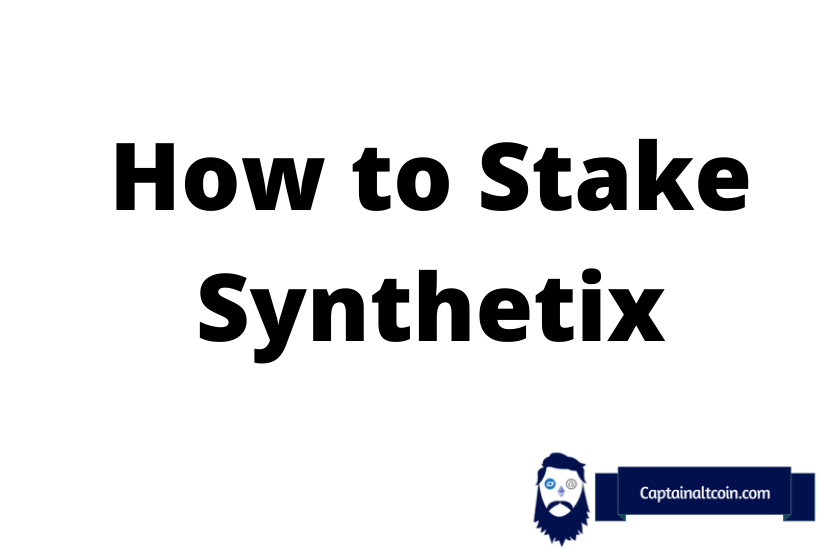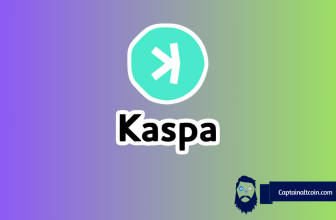
What you'll learn 👉
Quick Synthetix overview
Synthetix is a Blockchain protocol based on Ethereum Blockchain.
It is vital to understand financial derivatives to understand how Synthetix works. A derivative is a security instrument or a contract between two or more parties whose value is dependent on an underlying asset or group of assets. Its value derives from events that impact the underlying assets, such as fluctuation in price or other financial attributes. You don’t need to hold that particular asset yourself.
Synthetix is among ERC-20 smart contracts known as “Synths” that provide the holder with returns without holding that asset. A Synth can be derived from events that involve cryptocurrencies, market indexes, inverses, interest rates, or tangible assets like Gold or Silver.
The magic of Synthetix isn’t limited to crypto assets. It allows Synths to mimic an asset’s price in the “real world” and seamlessly codifies it into an ERC-20 token. However, it is essential to understand that holding a derivative that bets on a specific asset out in the real world does not equate to owning that asset. So, if you have a derivative on the price of Gold, you can not go out in the market and sell it as if you were holding gold bullions themselves. Similarly, if you bet on a stock price, you are not granted voting rights for that share.
Kwenta is the native exchange for Synthetix, where Synths are traded.
About Synthetix Network Token
The Synthetix SNX token, one of the most promising new DeFi assets, is an ERC20 token that runs the Synthetix network through staking Synths and eventually minting them.
The staking of the SNX token allows you to earn rewards via two different methods: as a reward for staking, you can receive fees collected on the Synthetix exchange and every week through a regulated system of inflation.
In March of 2019, Synthetix introduced a mechanism for additional rewards for staking SNX in the form of inflationary money supply in SNX tokens. The plan allows for a 1.25% weekly inflation rate decrease, as shown in the table below:

As the announcement from Synthetix explains, “There is currently a fixed supply of 100,000,000 SNX distributed across 75,000 SNX holders … An inflationary reward system to incentivize SNX holders to mint Synths. The monetary policy will run across a five-year period, increasing total supply from 100m to ~250m, with diminishing yearly distribution.
It is essential to understand that the purpose of staking SNX is to maintain the liquidity pool that backs the actual trading commodity, that is, Synths. Unlike other .P2P exchanges where parties are matched to trade against each other, the Synthetix exchange allows you to trade against the SNX-backed liquidity pool. This ensures zero slippage, the difference between the expected price of a trade and the price at which the trade is executed. The zero slippage is due to the deep liquidity that the SNX-backed liquidity pool provides.
The SNX and the Synthetix platform enjoy a high degree of confidence among DeFi investors. That is why over 60% of the supply of circulating SNX is staked in the liquidity pool.
Read also:
- How To Stake Polkadot on Polkadot.js, Ledger, Binance, Crypto.com
- Where Can You Stake ALGO?
- Best Ethereum Staking Platforms & Pools
- Is Staking on Atomic Wallet Safe?
- Best Staking Exchanges, Wallets & Services
- How to Stake Coins on Binance?
- Best Staking Coins
- What Can I stake on Ledger?
- Tezos Staking Guide – 4 Ways & Places To Stake XTZ
- How to Stake on Crypto.com
- How to Stake on Kraken
Synths
“Synths” are the synthetic assets one can create using the Synthetix protocol. These Synths are tradable on other exchanges that support Synthetix protocol. Essentially, Synth is a crypto asset that tracks and monitors the price of the underlying asset. The way Synths carry this out is with the use of an “Oracle.” Briefly, an Oracle is a price discovery smart protocol used to stay updated on the underlying asset price. This way, you can trade or hold the Synth as if you are holding the underlying asset.
It is essential to point out here that Synths are not traditional derivatives like “Futures” chained to the underlying asset. Instead, Synths are tokenized versions of the derivative. In that vein, Synths have some distinct advantage over traditional derivatives, namely:
- Anyone can issue them
- Can be liquidated Worldwide
- Borderless Transfers
- Easy Movement of Assets
Essentially Synths and SNX are interconnected because by staking SNX is how one mints Synths. And the Synths are unable to exist if they are not staked with SNX. So essentially, if you want to transfer out your SNX coins, you have to burn the Synths that were minted by staking the SNX.
Walkthrough (SNX Staking/sUSD Minting & Rewards)
It is important to note that you do not need to buy SNX to trade in Synths. You can do so by directly purchasing the Synthetix stable coin sUSD and use the sUSD to exchange it for other synths on the Kwenta exchange. However, if you want to earn staking rewards via SNX and sUSD minting, you must do so via staking SNX. You can also use the SNX token to mint your Synth and trade it.
To begin SX staking, you need to purchase SNX on an exchange. You will use the wallet that contains SNX with the Synthetix proprietary Dapp called Mintr.
Like any DeFi collateral, a person staking SNX needs to stake 6 SNX to mint one sUSD (to maintain deep liquidity for the Synthetix liquidity pool). The official target is to get this number to 800%, meaning to mint one sUSD, you will need to stake 8 SNX tokens.
Read also:

As you can see in the image above, Mintr is an easy-to-use and intuitively designed DApp that lets you Mint sUSDs, Burn Synths, trade, claim rewards, and transfer Synths. Once you have acquired sUSD through staking SNX, you can begin trading Synths.

As you can see above, all the details of your staking are displayed in your wallet.
It’s critical to know that the reward claiming and collection is a manual process and a person staking needs to take weekly action to check for rewards and claim them through the Mintr app.
The same thing goes when a user needs to either burn sUSD or adjust the ratio of SNX to sUSD. They will use the Mintr DApp to burn sUSD to gain back the SNX staked or adjust the ratio of sUSD to SNX at 1:8.

Closing Thoughts
Synthetix implemented the possibilities of bringing crypto assets to the mainstream and use them to invest and build a substantial investment portfolio in the “real world.”
FAQs
How the Synthetix exchange protocol works using SNX as collateral
The staking of SNX and minting of sUSD essentially creates a debt. For the Synthetix exchange, Kwenta, to release the SNX staked, you must burn the number of sUSD at the ratio of 1:8 (Each sUSD burnt releases 8 SNX tokens) to get the Kwenta to release your SNX token.







